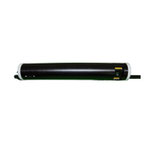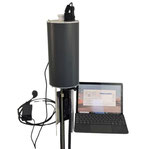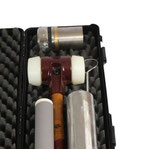Minirhizotron Cameras for UHD Root & Rhizosphere Imaging
Ultra HD Minirhizotron camera systems and accessories are key tools for non-destructive in-situ studies of root and mycorrhizal dynamics and related ecosystem processes. Capture non-destructive UHD images of living roots, root hairs, mycorrhizal hyphae and soil fauna - manually or automated. Monitor root and hyphal development over the course of a day, a crop cycle, or multiple seasons with reliable, high resolution Minirhizotron camera systems!
Minirhizotron Camera Systems
MS-190 - UHD Minirhizotron Camera. Manual, classical Bartz-type Minirhizotron System for narrow to wide MR tubes installed at any angle. Reliable Indexing System. For pot, mesocosms and field studies. Minirhizo Starter Set MS-190S available (Camera + refined Tubes + Corer).
AC-19 - Semi-automatic Minirhizotron Camera. Camera system for horizontal tubes, as frequently installed in rhizotron facilities. Independent, semi-automatic imaging on a gear rack, and automatic tube registration allows one operator to run several AC-19 MR camera modules in parallel.
AC-21 - Automatic Minirhizotron Camera. Fully automated camera system for vertical and angled root observation tubes. Designed for permanent field or greenhouse installation and 24/7 or regularly scheduled imaging campaigns. Competitively priced camera kits available for replicated experiments
Minirhizotron Accessories
Minirhizotron Tubes. Acrylic MR observation tubes of various diameters. Refinements (end caps, bottom plugs, light shielding foil, positioning hole/drill jig, etc.) for minirhizotron tubes.
Minirhizotron Tube Corer. A manual coring system with a smaller diameter than MR Tubes, ensuring a tight installation of the acrylic MR tubes to a maximum depth of 1 m. Alignment frame for standardized, angled MR tube placement available.
ICAP 8 MR Software. Bartz software to operate the MS-190 and organize Minirhizotron Imaging campaigns.
VSI Minirhizotron Camera Systems - Ultra-High-Definition Root Imaging Systems
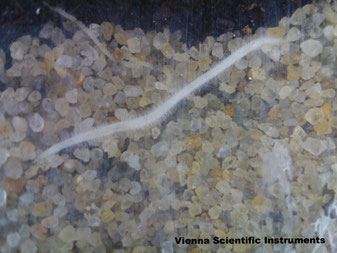
Vienna Scientific minirhizotron cameras are fixed diameter systems for root observation tubes of 5-10 cm of inner diameter (2 inch being the former "Bartz" standard = narrow gauge) – allowing for continued use of available minirhizotron tubes and to easily upgrade older / scanner-based imaging systems. Imaging systems for non-standard tube diameters can be realised upon request.
The imaging process can be (semi-)automatised including tube recognition (AC-19) in rhizotron facilities, and fully automatic, continuous imaging of pre-set locations under field conditions (AC-21). Classical positioning systems with manual indexing ("Smucker handle") but advanced rotational positioning are available (MS-190). In any case, precision in terms of imaging quality and repeatability of imaging locations is key. All imaging systems allow capturing Full HD / UHD images of selected areas (at the tube surface), easily allowing to adapt the monitored minirhizotron tube surface to research needs. Image size allows to align root length observations from MR-Ts e.g. to biomass sampling depth (e.g. 0-10 cm, 10-20 cm, ...) without recutting images. Imaging a depth gradient at a time, on predefined sides of the MR-T, is recommended when using angled MR-Ts - allowing for more accurate soil depth determination than other root imager systems on the market. The VSI minirhizotron imaging systems are either programmed and operated by a tablet or a laptop (Windows OS, dedicated Bartz ICAP or MR Editor software). Devices are powered by internal batteries (MS-190, AC-19), external 24 V batteries (AC-21) and/or power line (110-230V; MS-190, AC-21). Image naming follows the ICAP-scheme to be compatible with image analyses software world-wide (see below).
Minirhizotron Root Imager - Working Principle
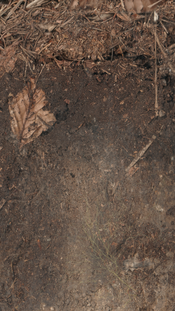
MR systems are based on transparent root observation tubes (MR-T) that are inserted tightly into the soil with MR soil corers of a dedicated, smaller diameter. A minirhizotron imaging device is then inserted into the tube to take images of (regrown) roots and the rhizosphere (incl. soil fauna and hyphae) as seen through the MR tube walls. The images are recorded and processed by a control unit for later analyses. See Rhizotrons to read more about the origin of minirhizotron. Various free and commercial analysis programmes have been developed for MR Images. Newer approaches heavily rely on Machine learning based techniques for fast root segmentation in the heterogeneous soil environment.
Application Potential of MR Imaging Systems

Observing the development of root systems is key to understand plant performance in natural and production ecosystems (trees and crops), and i.a. an important mean to unravel water, carbon and nutrient dynamics of terrestrial ecosystems. Non-destructive imaging of roots and the rhizosphere can be used to determine a wide range of parameters (under controlled or abiotic and biotic stress conditions, in situ, rhizotron facilities / underground laboratories or the greenhouse / mesocosms, see image), including root system development, observation of root growth and turnover patterns, root distribution per depth (root system architecture, RSA), occurrence of mycorrhizal root tips and hyphal development, rhizobia development, and observations of soil fauna. Complement MR tubes with Sentek advanced soil moisture probes to characterize water, temperature (and electrical conductivity) at each rooting depth to better understand the abiotic factors influencing the root and rhizosphere dynamics observed.
Minirhizotron imaging cameras thus have a wide range of applications in the study of plant roots, mycorrhizal hyphae, belowground pests such as Orobanche and other biotic and abiotic interactions within the hidden half of ecosystems. Ecosystems to apply MR imaging systems range from managed systems such as agricultural lands and forests, to pristine ecosystems, to studies in mesocosms and pots under controlled conditions (greenhouse, growth chambers).
- Some potential applications of minirhizotron root imaging cameras include: ... Continue reading
-
- Root growth and development, phenology: Minirhizotron cameras can be used to non-destructively monitor root growth and development over time, providing researchers and professionals with detailed information on the dynamics of root systems and how plant phenology is influenced by environmental factors and changes during plant development. Farmers can use this information to adapt fertilisation and irrigation regimes to root development incl. rooting depth.
- Root system architecture: By visualising root systems in situ, minirhizotrons can help researchers study the architecture of root systems (RSA) and how they respond to environmental cues.
- Assessing effects of abiotic and biotic stresses: Minirhizotrons can be used to study how roots respond to stresses such as drought, flooding and nutrient deficiency. They can also be used to study interactions between roots & ectomycorrhizal symbionts, and roots & pests.
- Plant breeding: Root imagers can be used to select for more stress-tolerant crop genotypes, such as those with root systems that allow stable yields in low-input systems.
- Evaluating the efficacy of management: Minirhizotron cameras can be used to evaluate the effects of fertilisers, soil amendments (organic matter, hydrogels, etc.) and biostimulants (growth promoting bacteria, etc.) and mechanical management (no-till, ploughing depth, etc.).
- Carbon sequestration: Information on root longevity/turnover rates in perennial systems allows determining root litter formation and thus approximate carbon input to the soil from decaying roots.
- Soil animals: High-definition mini-rhizotron cameras provide a unique opportunity for researchers to view in situ the activities of soil animals such as Collembola.
Overall, the potential applications of in situ root imagers are diverse and far-reaching, making them a highly valuable tool for researchers, breeders and agronomists interested in gathering information about root systems and their interactions with the soil / soil organisms under real growing conditions. Contact Vienna Scientific to dicuss your application, and how VSI root imaging systems can facilitate data collection.
| References | Minirhizotron Application | OPEN |
|
||
Things Required for a Minirhizotron Study
- Root imaging device.
- Minirhizotron tubes (MR-T): Acrylic tubes (standard) of various diameters can be purchased, other materials are available upon request. In addition, we can cut MR-T to length. If you like to acquire your MR-T elsewhere, please inform us about the tube dimension (inner, outer diameter) when purchasing an MR camera. It is recommended to close your minirhizotron tubes on both sides to prevent water, dust and daylight to enter ("tube refining"). We supply (removable) end caps or produce all possible types of permanent seals (bottom only). If installed in non-temperate ecosystems, an extra insulation of the protruding tube part is recommended to minimize changes in soil temperature around the tubes.
- Soil coring set: A corer with a slightly smaller diameter is recommended for tight installation. We manufacture minirhizotron corer sets suitable to install the chosen MR-T type to a depth of approx. 1 m (depending on brawn, and soil skeleton). Alternatively, install MR tubes in controlled experiments during mesocosm / pot filling.
- Image analysis software, for example rhizoTrak, Rootfly. RootPainter, MR-RIPL, WinRhizo Tron(TM) (commercial). Visit the Plant Image Analysis webpage of G. Lobet for a comprehensive list of root image analysis software tools. See our new publication on segmentation techniques / machine learning algorithms for automatic root detection.
For root imaging solutions ex situ, using RhizoPot Scanner Systems, or semi- or fully automated Rhizobox imaging devices, see the respective products.
To measure soil moisture, temperature, and EC along the Minirhizotron tube root / soil profile, consider using manual or continuous Sentek soil moisture sensors.


